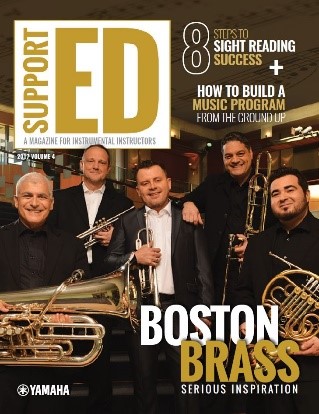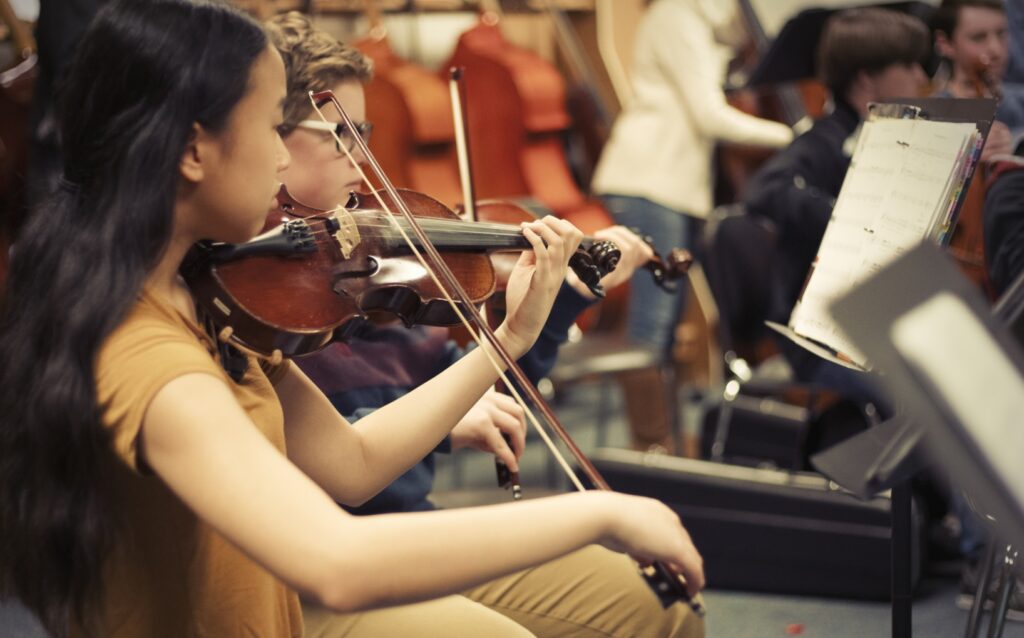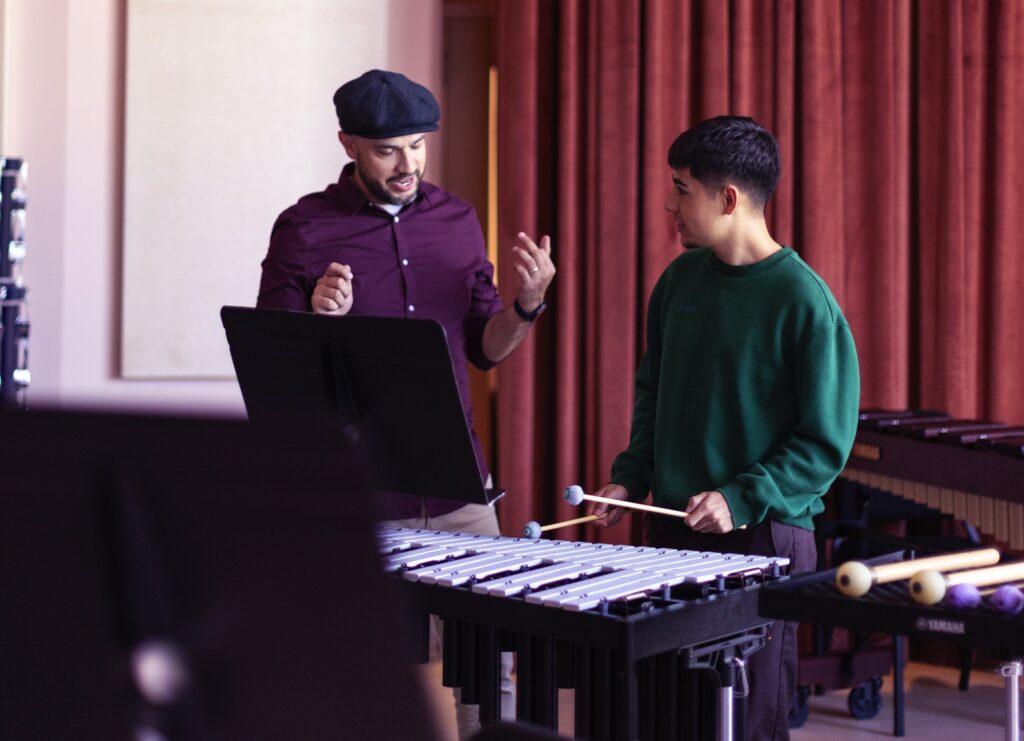8 Tips for Sight-Reading Success
Incorporate sight reading into daily practice and foster skills for a lifetime of musical success.
The key to sight-reading success? Consistent daily practice.
Dr. Charles R. Jackson Jr., part-time assistant professor of music at Kennesaw (Georgia) State University, agrees, emphasizing that the process is just as important for the full band as it is for individuals. “Just a few minutes every day, enough to play a few measures of new music, can help an ensemble become very confident and comfortable with the sight-reading process.”
Burritt and Jackson share their tips for guiding music students as individuals and in entire ensembles toward sight-reading success.
Tip 1: Start Young
Jackson recommends making sight-reading a daily part of rehearsal starting in middle school. “As early as 6th grade, if not earlier, sight-reading has to become part of a band’s daily rehearsal schedule,” he says. “Daily sight-reading practice then becomes a normal way of musical life for the students.”
Introducing regular sight-reading at this stage also helps build confidence in young musicians. “There’s no apprehension in a competitive setting because they have over-prepared ahead of time,” Jackson explains. “Students introduced to the concept as young musicians don’t consider sight-reading difficult because they are challenged early on.”
Tip 2: Tighten the Nuts and Bolts
Teach students to dissect all aspects of the music — the “nuts and bolts,” Burritt says. This process includes reading through the notes (including any rests) and noticing any key changes, time changes, accidentals, dynamics or other markings.
“Ask your students to look at the terrain of the music and to try to hear the music in their heads before they play it,” Burritt recommends. “They should ask themselves: ‘How is the music going to sound out loud?'”
Tip 3: Write It Down
Reinforce visual learning with written exercises. Jackson has used rhythmic analysis worksheets with his students with consistent success. “We would work daily on the worksheets, studying two measures at a time,” Jackson explains. “The students would indicate beats, notes and rests with up and down arrows or numbers. The approach encompasses all types of learning styles.”
Tip 4: Scale to New Height
To recognize key signatures during sight-reading exercises, you need to practice all of the scales — even the ones that may seem difficult.
Introduce the scales in chromatic order. “It helps encourage confidence in young musicians to build the scale cycle chromatically [C, C#/Db, D, D#/Eb, E, F, F#/Gb, G, G#/Ab, A, A#/Bb, B],” Jackson says. “Then when students are presented with a piece in the key of B, they don’t consider the music difficult.”
Tip 5: Tap the Rhythm
When they read through the music for the first time — before they pick up their instruments — have the students tap the beat with their feet. “This helps the students internalize the sense of pulse,” Jackson says. “Essentially, they become the metronome.”
Another benefit? “They learn to tap in phase with their neighbor, so all the students are in phase with each other,” Jackson says.
Tip 6: Play With Friends
Regular sight-reading as part of a duo or small group helps musicians absorb the music more quickly. “When you play by yourself, you can stop and start whenever you want without impacting other musicians, but when you play with someone else, you have to keep going,” Burritt says. “It forces you to look two, three or four beats ahead. Plus, it makes sight-reading more fun.”
Tip 7: Be Dynamic
When judging sight-reading performances at festivals, Jackson sometimes encounters bands that have great balance and technical ability — yet the music lacks expression. He attributes this problem to an ensemble paying little attention to dynamic contrast during sight-reading practice.
“I compare it to a painting done in black and gray tones — how much better would it look in color?” he says. “Music is all about expression. Those changes in expression noted on the page are part of the music. The band has to make it sound like music.”
Tip 8: Practice, Practice, Practice
And finally, because it bears repeating: practice, practice, practice. As Burritt says, “The key to sight-reading is to practice it on a regular basis, to make it a consistent part of daily [routine].”
Keyboard percussionists and pianists face a unique challenge when sight-reading. They must resist the urge to look down at their hands. “It is a learned skill to not look at the keyboard while learning new music,” says Michael Burritt. “Keyboard percussionists must learn to play by feel.”
Repeated practice of this technique helps such musicians develop the muscle memory to read music without looking down at the instrument. “You have to trust your muscle memory,” Burritt adds. “Your ear will tell you where to go, high or low. Just keep playing.”
This article originally appeared in the 2017 V4 issue of Yamaha SupportED. To see more back issues, find out about Yamaha resources for music educators, or sign up to be notified when the next issue is available, click here.

















